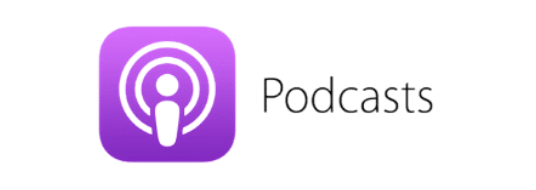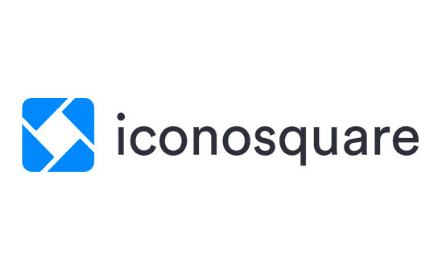Introduction
In this episode, I was joined by Agata Krzystofik. Agata is a growth mentor and a marketing leader with 10+ years of experience in developing and executing growth strategies at companies like Google, Groove, and Piktochart.
Currently, as a VP of Growth at Piktochart, she is leading a 100% remote marketing, sales, and product team. Together with her team, Agata is on the mission of empowering people to tell great visual stories that stick.
What You’ll Hear
- [1:20] About Agata and her background
- [9:10] Agata’s tips for standing out and staying one step ahead
- [14:15] Why choose Piktochart?
- [18:15] How effective storytelling can help grow a business
- [22:05] The elements that make one business more successful than others
- [28:30] Social media predictions for 2022
- [42:30] The most interesting place Agata has visited
Proudly Sponsored By:
About Agata and Her Background
Agata worked at Google for over six years, managing a team of community and social media managers who worked on the online community platforms. She was keen to get involved in the world of start-ups and have the opportunity to see how her work impacted directly on a company.
She moved to Germany and joined a small start-up which had been running for around two years. There, she built the marketing department from scratch, hiring the whole team and set up all the channels.
Three years ago, she had a conversation with one of the investors, who told her that he believed the whole market and the way we work will change – a lot of companies would default to remote working. Those who adopt this early on will be teaching those who come after, he said.
Agata realised she wanted to be one of those early adopters, and was interested in how a remote team could be managed when they’re not supervised in person. Instead, the relationship is based on trust and you have to manage performance in a different way.
She decided there would be a need for leaders who could do this supervision, and made it a goal to move into a fully remote working company. She achieved this in less than a year, working at Groove and spending some time as a consultant.
The CEO of Piktochart then approached her – at that time the company wasn’t fully remote. The marketing department was remote but every other part of the business was based in Malaysia. The decision was made to make the business fully remote, and she now works with a range of SaaS companies.
The Covid pandemic has also helped to change opinions of remote working. Before, Agata says, people didn’t really understand that their colleagues had other responsibilities, such as picking up the kids or looking after them if they were unwell.
“There were two versions – the work you and the home you. And now people have seen a glimpse into your house, and they see the child or the cat or dog behind your chair. It makes us all more human.”
Agata’s Tips for Standing out and Staying one Step Ahead
It’s not easy, says Agata. Piktochart has been running for 10 years now, and that makes it harder, because you always have to stay fresh. There are new competitors coming into the market who are bringing new ideas.
Piktochart has some big competitors, such as Canva, but there’s never been an intention to be a huge business. The two founders are married and the business is still family-owned. They want to keep the business small and there are only 50 employees to six million users.
Piktochart want people to make their own decision about which platform they use and to go with their favourite. However, Agata says they still have to be competitive, because otherwise customers will go for another option.
That means introducing new features, having an up to date and easy to use interface and giving customers what they want. Many of their users are marketers, and the formats they use for visual communication are constantly evolving too.
As more people are using video, the company recently launched Piktostory, which focuses on video editing. At the same time, it’s important to show customers you care, and they get a family feeling from you. You’re there to help, and your existing clients are important – you’re not only interested in new customer acquisition.
Agata says that their bigger competitors struggle to adapt as they grow, and they can’t make changes fast, because of the impact it has on other areas of the business. There are too many processes and too many decision makers.
Piktochart have won big clients, such as United Nations. Their feedback was that they liked the personal approach during the onboarding process, which was one of the reasons they work together. Piktochart were able to work with them on their specific customisation requirements.
Why Choose Piktochart?
Agata says that Canva is great for a lot of personal visuals, such as invitations or business cards. They’re also very flexible, so they have basic tools to use in place of Photoshop or Illustrator.
Piktochart’s customers say that their main advantage is that they’re great for visualising data, which isn’t something that Canva specialises in. They focus more on personal use cases and for marketing graphics. Piktochart are better for internal communications and long-form visuals, such as infographics, reports and posters.
They also allow users to create interactive dashboards for maps, specific graphs and to translate complex data into visuals. These features have always been a priority for Piktochart and they work hard to improve and refine them.
Customers use them for business storytelling. The tool helps users share stories internally and externally, and also in learning and development to educate employees. This has been particularly helpful during the pandemic, when employers had to find new ways of engaging with their staff.
How Effective Storytelling can Help Grow a Business
People are spending more time online now, and associate a brand with a particular person: “The link between the brand and its human aspect has become more important, and storytelling is a crucial part of that.”
Storytelling is one of the most natural things in the world, says Agata, and when we hear stories, they help us trust people and get a buy-in. Businesses can easily underestimate it.
For a new business, storytelling is a great way to tell people about why they started, and when you grow and want to reconnect to your audience, going back to the beginning helps people relate to you.
Write down all the stories – whether you’re a couple running a business, you became a mum and want to improve life for other mums, or you left a corporate career. Stories stick better than a marketing message or anything else you do.
The Elements That Make One Business More Successful Than Others
Agata says there’s always an element of luck when it comes to business success. You met the right person at the right time, or you got the help you needed. If you look objectively at two similar businesses, where one made it big and the other didn’t, it’s not always obvious why they were successful.
However, outside of this, there are factors that have an impact. And it depends on what type of business it is. For B2C businesses, it’s important to treat your customers well and focus on them from the beginning.
Agata says Zappos Shoes are a great example. It’s hard to buy shoes online, because you need to try them on. Zappos put customer excellence first – they didn’t care about how much time their staff spent on the phone to customers, and built up a loyal client base.
For a B2B business, if you put your customer at the centre of what you do, you’re more likely to succeed. Think about what you’re building – is it really solving a customer problem? That’s where companies fail.
The founder comes up with an idea to solve a problem he has, and assumes that everyone else has the same one. You have to get away from that idea, and test it with users. What solution are they looking for? Talk to people outside the business and build a product that they’ll love and want to buy.
Agata added: “If you want to be good at everything, you’ll end up being good at nothing. You need to prioritise, because you can’t make everything a priority. Focus on one area first, even if your solution can solve a problem for lots of different types of customers.
Make sure you first go with one, and do it really well for that niche. That way you’ll generate revenue, and it will buy you some time. And you’ll also have a budget to develop your offering for other people. Multiple niches aren’t a good idea.”
Social Media Predictions for 2022
Agata says it’s so hard to keep up with social media, especially as there are new platforms all the time. She relies on her cousin’s teenage daughters to keep her up to date with new things.
Recently, Agata worked with a lady offering psychological support to families of dementia sufferers. She was using Clubhouse effectively to get people together virtually to talk about the situation.
“What’s good is that people don’t have to see each other face to face. People often call a helpline when they need psychological support, and Clubhouse is like that but scaled up. You can have a support room and have lots of people together. It’s an unexplored area which could see Clubhouse grow.”
Video is becoming more popular, and during the pandemic we’ve got used to seeing the human side of employees. In the past, video was reserved for professionals, who could afford to pay for editing.
Now, it’s ok to record a natural video on the go, and we see it with Instagram Stories all the time. People share their thoughts, and this will become more popular. Piktostory allows people to record videos quickly and share it on social media platforms.
You can edit it in the same way as a Google document, and it automatically transcribes the audio. Video editing tools are very complicated and still aimed at experts, so Piktostory is for people who want to create and share on the go.
Piktochart experiment with their content, and took some of their best-performing blogs and turned them into video scripts – they then turned them into videos and embedded them from YouTube into the original posts.
They noticed that it really helps boost the authority of the blog, especially as Google prioritises video. Try to make it as natural as possible – don’t just read the script! It’s also good to include some visuals, and Agata says these don’t have to be advanced. And include subtitles on the video as well.
Content repurposing will be big in 2022, Agata predicts, and Piktochart is focusing on this a lot. They want to give their clients options to repurpose their own content, too. People consume content in all kinds of situations, so having different formats allow people to do that.
The Most Interesting Place Agata has Visited
Agata has travelled a lot, but says Cappadocia in Turkey is probably her favourite place. It’s beautiful, and it’s well-known because of the pictures of the colourful balloons flying over brown mountains.
It’s an ancient city, built from stones and sand, but is well-maintained, so it’s like travelling back in time. Agata said flying in a balloon was amazing, and the experience made her realise that flying is usually associated with the noise of a plane.
Final Comments
To mark their 10th anniversary, Piktochart are offering a lifetime deal for both Piktochart and Piktostory
visit www.piktochart.com to find out more.
Search for Agata on LinkedIn and if you’re a business owner in need of mentoring or advice, you can also find her on Growth Mentor.



















